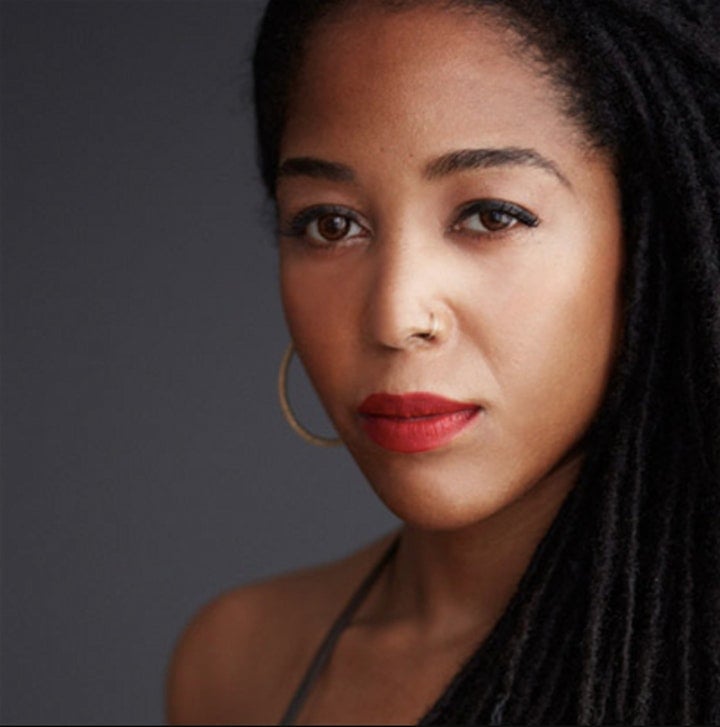Art Collectors
What I Buy and Why: Art Advisor Alaina Simone on Bartering for Work in Her Collection, and the Market Advice She’d Give Young Artists
The collector has worked as an artist liaison, gallery director, and consultant over the years.

The collector has worked as an artist liaison, gallery director, and consultant over the years.

by
Artnet News

Alaina Simone has worn many hats in the art world since getting her first job in the industry at Detroit’s 555 Arts some 17 years ago. She’s been an artist liaison, a gallery director, a curator, a head of development, and a board member, to name a few.
Lessons from each of those roles inform Simone’s current job, running her own artist management agency in New York. There, Simone similarly plays a number of parts—an advisor to creators, a marketing consultant, a producer of events. And if that wasn’t enough, she’s also an accomplished collector with a penchant for supporting the work of up-and-coming BIPOC artists.
Below, Simone tells us about her collecting habit, her path through the art world, her advice for young artists, and her biggest takeaways from the last year of turmoil.
Which artists first inspired you to begin collecting art?
When I started as a gallerist in 2004, the artists I was handling were beyond my “gallery girl” salary. I remember Nathaniel Mary Quinn offering me a piece at around $500 to $1,500, which I sadly could not afford at the time. I barely made enough for the subway ride home, but I was doing what I loved. I was handling works by Howardena Pindell, Ed Clark, and Frank Bowling. I dreamed of the day that I could afford their work. I purchased a lithograph by Benny Andrews that I gave to my mother. I was proud to gift her that piece, but my first actual painting, a textile piece, is by Barbara Ansell.
Ansell worked with Al Loving, and I loved her gestural abstract paintings and her use of various mediums, which was highly reflective of Loving’s process. She was also extremely kind, and I loved talking to her about art and collecting work is a way of extending my art community and family. It is a very personal experience.
What accounts for a great collection?
In my opinion, a great collection is something that reflects the collector’s approach to the way they “see” and experience art. It has to come from a real place. Now, I see a lot of collectors who are just ticking off popular names, and I’m not sure if they really like the work or are influenced by what the market dictates regarding the current “art stars.” And now that social media is a factor, it has completely changed the game, and that has its pros and cons.
Which artists have your attention this year that we should be aware about?
I’m looking all over all the time. During the pandemic, I reached out to around 50 artists and was highly active in developing a group of artists that I want to engage and work with long term. I put myself on a path of discovery, and I made myself have studio zooms at least three times a week. I wanted to expand my network, and it was great to immerse myself in my practice and meet people from Mexico, Italy, Trinidad, Lagos, and beyond. I was in several countries worldwide talking to artists while sheltering in place during the pandemic, and I loved expanding my breadth of knowledge. It was a fantastic experience. The pandemic gave me that time that I never had before to slow down and to be introspective. From lemons, we made lemonade. It was a sweet experience.

Brandon Coley Cox, Corrupted (2007). Courtesy of Alaina Simone.
If you had infinite resources, what work, from any place or era, would you like to add to your collection?
I would love an Ed Clark painting from the 1950s and one of Howardena Pindell’s large canvas works, or one of her video drawings. I’d also love a Frank Bowling from the ’70s, ’80s, or ’90s but any Frank Bowling is good. I’d equally love a Julie Mehretu, Sanford Biggers (quilt work), Mark Bradford, Derek Fordjour, Abigail Deville, Bettina Blohm, and Samuel Levi Jones.
What are some of the new challenges you see facing artists and collectors today that you’d like others to be aware of?
I think that artists should not think about the market as much. I think they should know about the market, but the market should not be on their minds when creating the work. It’s weird when artists create work for an art fair. I get it because, of course, the booth should look good, but it feels contrived, almost like they’re creating work directly for the market. I think that artists should create work and develop their practice with “blinders on.” Social media makes a lot of noise that is unavoidable for a lot of artists. I’ve worked with some who periodically turn off their social media accounts to turn down the noise a bit. Artists should compete with themselves, not necessarily other artists. There is no finish line, and this is a long game.
What have you learned since the pandemic put a pause on this past year?
To fully trust in God and to have more faith in things “unseen.” Also, it was an exciting time to work with artists who were expanding their worlds and experimenting with different mediums and tech. I’m currently dropping an NFT as a collaboration with Akwetey John Orraca-Tetteh, an interdisciplinary Ghananian-American artist living in Mexico who goes by the name Special Krystal for his “Real Time” series. It is fascinating to think about how the art world could expand and include communities that were once excluded and not considered relevant with regard to audience development.
What was your most recent purchase?
I barter my artist liaison consultancy services with artists I love. My last acquisition was by a Cuban artist whose estate I’m very interested in working with going forward.
Which works or artists are you hoping to add to your collection this year?
This is a huge question but, God willing, I’d love a Yashua Klos and Tomashi Jackson.
What is the most expensive work of art you own?
I would never answer this question.

Mehdi Georges Lahlou, Cocktail ou Autoportrait en Société (2010). Courtesy of Alaina Simone.
Where do you buy art most frequently?
As a dealer, I’m mainly purchasing or acquiring work from the artists that I’m working with and are a part of my practice.
Is there an artwork you regret purchasing?
No.
What work do you have hanging above your sofa? What about in your bathroom?
David Antonio Cruz, Elia Alba, Shani Peters, Brandon Coley Cox, Alexis Peskine, Tahir Carl Karmali, and Mehdi George Lahlouare in my living room. My couch is pretty long and the art is not centered around my couch. I would not recommend putting work in the bathroom because of condensation. I found a drawing that I purchased on the street in Cuba that is in my bathroom.